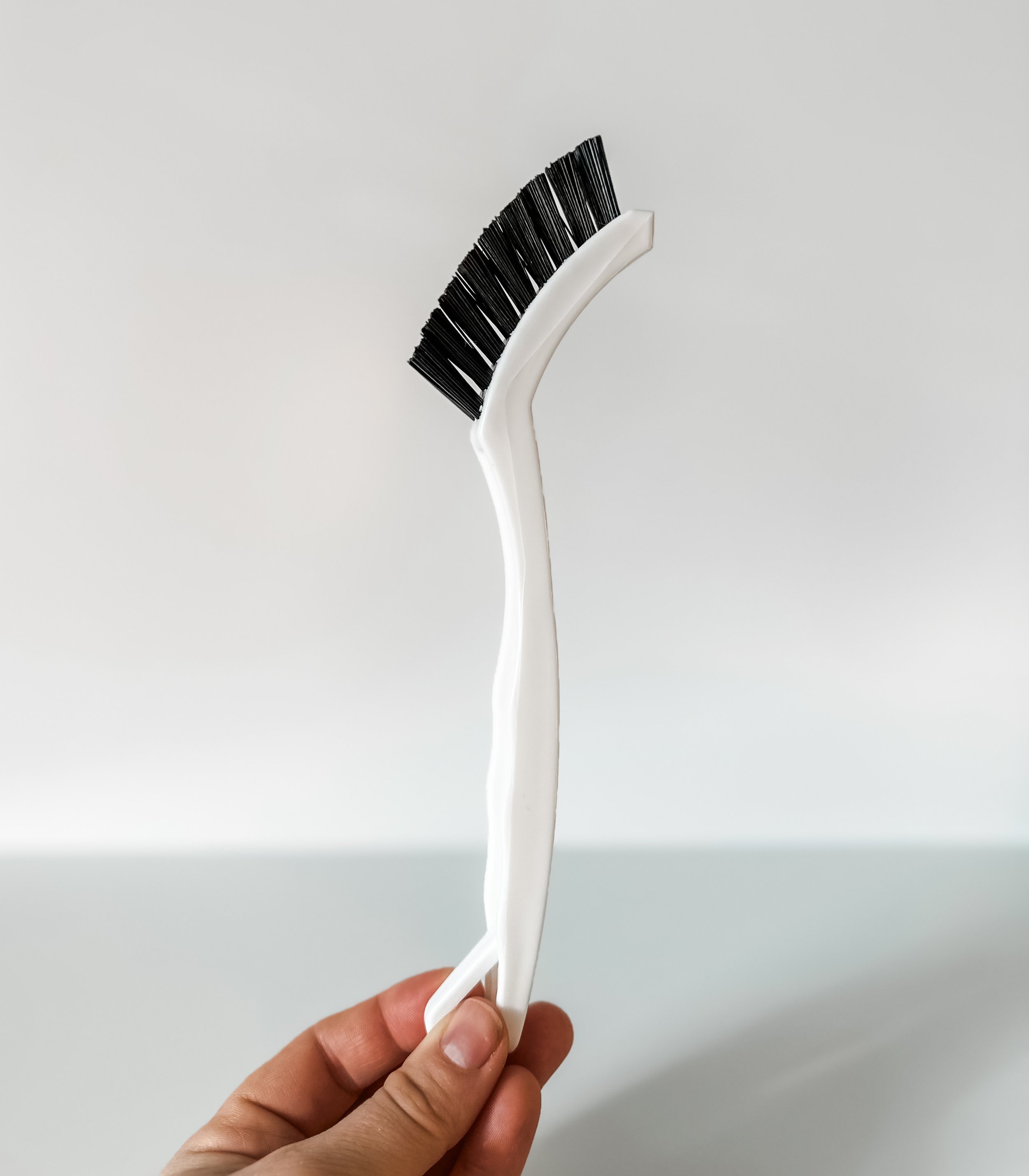3 Brushes You Need for Cleaning
In cleaning, there is a time and a place for the use of brushes. Brushes are an essential part of your toolkit. Depending on the types of surfaces that you have in your home, you may or may not need all 3 of these essential brushes.
Brushes are typically used in the following instances:
• You’ve got a porous surface, such as a porcelain sink (see below).
• You’ve got an uneven surface. This might include textured flooring or mini-suction cups on the back of a non-slip bathmat.
• You’ve got some hard to reach areas that need detailing.
The cleaning brushes I’m recommending below is based on size and/or application method.
Dish Brush
Regardless of whether you have a dishwasher, a dish brush is an essential brush to have in the kitchen. While there’s the obvious usage of the dish brush (to clean dishes that don’t go in the dishwasher) there’s another use for a dish brush: to clean the sink.
Especially if you have a porcelain sink, this will come handy. Porcelain sinks are ‘porous’. This means that there are tiny microscopic pores in the porcelain sink that a sponge would normally pass over. Scrub the sink using a dish brush, soap, water, and maybe some baking soda. This will help lift the dirt + debris out of the pores so that you can rinse it down the drain.
Grout Brush
A grout brush comes handy for hard to reach areas when cleaning. This might include grout as the obvious usage of this brush.
Other uses might include the edging around faucets and drains, the area where the floor meets the baseboard when hand mopping floors, and more. Due to the size and shape of this brush and its nylon bristles, you can apply a lot of pressure with an all purpose spray to help lift dirt + debris + grime from some gnarly corners of your home.
Hand Brush
A hand brush comes handy for the instances in which you’re cleaning large, uneven surfaces. It’s nearly impossible and at best, laborious, to scrub an uneven surface with another tool such as a sponge or a towel.
A hand brush has a handle, where you can use the grip of your entire hand and apply the pressure of your body weight when scrubbing. This makes things a little more ergonomically friendly and helps further aid in your cleaning efforts.
Instances in which you’d use a hand brush might be textured flooring, the underside of bathmats that have mini-suction cups (this area tends to buildup with pink mold due to it being wet and covered), or shower floors made of stone.
In wrapping things up, the grout brush and the hand brush can easily be stored in a caddy, while the dish brush can be stored in the kitchen by the sink or under the kitchen sink.




